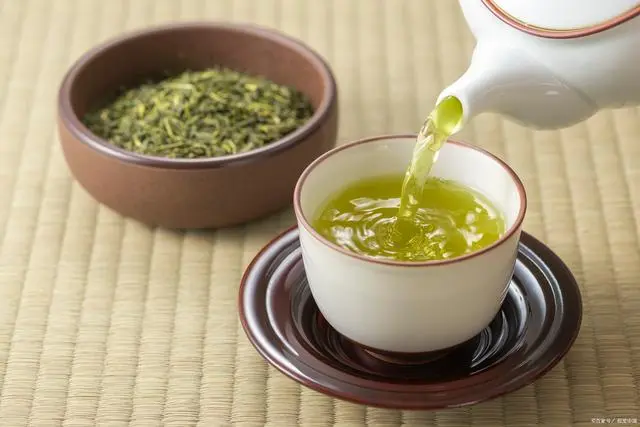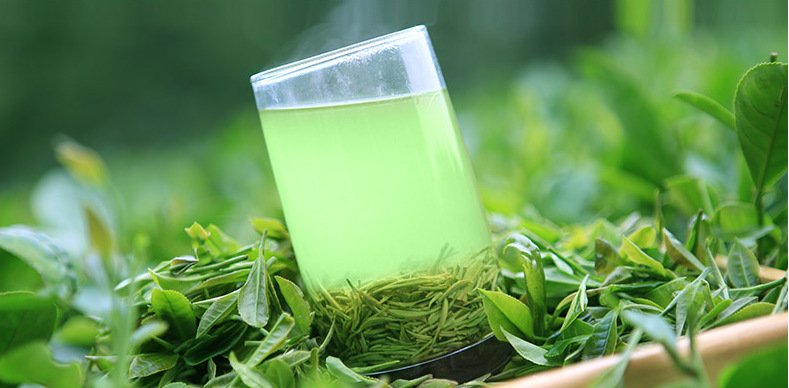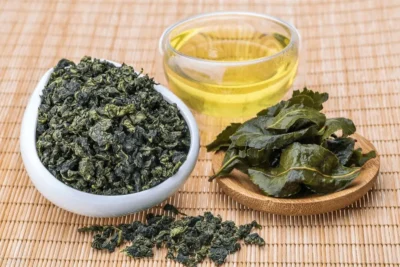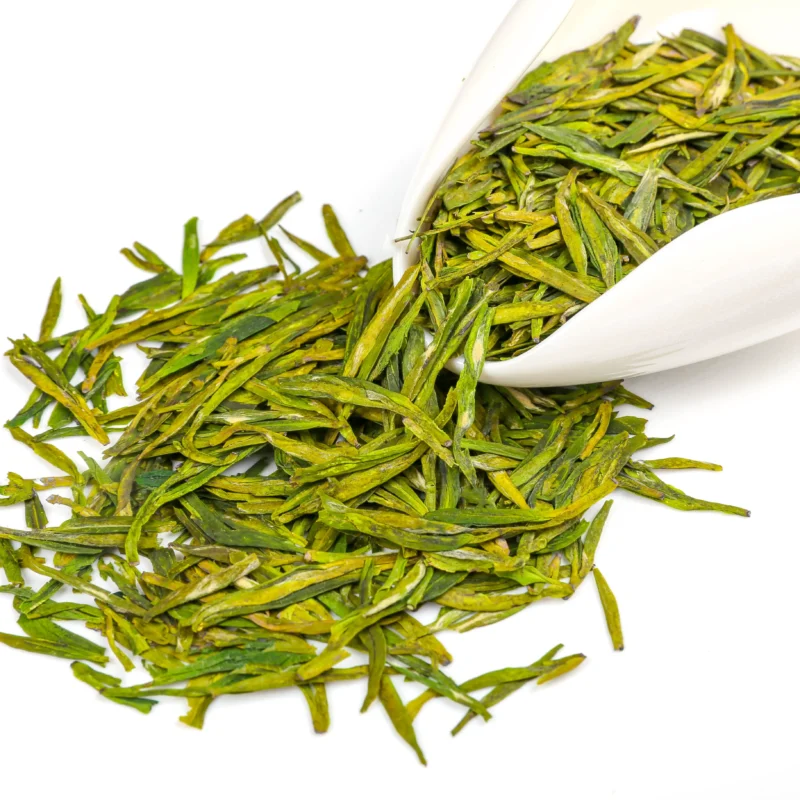Green tea, as a treasure of tea, is famous for its fresh and delicate taste and rich health benefits. As one of the most influential tea varieties in the 5000-year history of China, its unique advantages are gradually emerging. In terms of production process, it has an advantage because fermentation is not involved in the production of green tea, so the nutrient structure is not destroyed; plus its color is fresh, with a main color of light green, so it is highly favored by those who pursue health and longevity. But which tea variety is the best among all the green teas? Let’s explore together.What are the main nutritional effects of tea?
Tea contains at least 300 chemical components with nutritional and health benefits. The main nutrients are: proteins, amino acids, fats, sugars, minerals and trace elements, as well as vitamins; there are over 10 kinds of vitamins in tea, most of which can dissolve in water during brewing and can be fully utilized. In addition, tea contains pharmacological components with multiple functions, such as tea polyphenols, caffeine, and lipids. These are the material basis for the high nutritional value and medicinal effects of tea. Drinking tea regularly and appropriately will be very beneficial to one’s health.
The Best Green Tea Varieties
1.Xinyang Maojian: a treasure of Henan Province, with a unique style
Xinyang Maojian is produced in Xinyang City, Henan Province, China, and is one of China’s top ten famous teas. It is also one of the famous local products of Henan. Xinyang Maojian has a unique style of “fine, round, bright, straight, many white hairs, high fragrance, strong taste, green soup”. Its tea leaves are tender and even, with a bright green color, high fragrance that lasts, and a young green bright soup. Drinking a cup of Xinyang Maojian, one can feel the gift of nature and the craftsman’s unique skills, leaving a lingering aftertaste.
There are tea trees all over the mountains and hills, and tea pickers work from early in the morning till late at night to pick only a few kilograms of buds every day. After returning from tea picking, the fresh leaves must go through the traditional processes of classification, spreading out, roasting in a wok, initial drying, spreading out again, re-roasting, sorting the tea, and finally, re-drying, before they can be turned into finished tea. A cup of Xinyang Maojian tea is the result of the hard work and sincerity of the tea pickers and their admiration for the mountains.
2. Biluochun tea
Anyone who has even a passing knowledge of tea should be familiar with the Biluochun variety, one of China’s most renowned teas, grown in the vicinity of Taihu Lake in Suzhou. Its shape is also distinctive, as the name suggests, taking the form of a spiral and being harvested in the spring, with its entire body wrapped in green.
The brewing method for Biluochun is not overly complicated either. Before brewing, we need to prepare a glass cup, 300 milliliters of 80°C water, and about 3 grams of Biluochun. Next, we pour one-third of the hot water into the glass cup, then add the Biluochun to the cup and let it sit until it fully unfurls. Then, we continue to add hot water, and finally wait for about 5 seconds before the cup is ready.
The fragrance of Biluochun tea belongs to a heavier category and is accompanied by a slight scent of fig; while the taste of Biluochun tea is smooth, sweet, and has a lingering aftertaste, leaving a refreshing and endless taste in the mouth.
3. Longjing Tea
Longjing tea originates from West Lake in Zhejiang Province, and its differences from Biluochun tea are very obvious. Its appearance is flat and smooth, with a pointed tip on the bud and a young green color. The surface of the tea leaves is hairless, and the buds are usually longer than the leaves by about an inch or so: about three centimeters in length, without any broken pieces or stems.
The brewing method of Longjing tea is also very simple. Before brewing, you need to select a gaiwan or a glass cup, and prepare some 80°C hot water. To start brewing, simply take one fifth of the container and add 3-5 grams of Longjing tea to it. Wait for it to dissolve, then continue adding hot water and wait for a few seconds before serving. The aroma of Longjing tea is refreshing and has the unique fragrance of green tea. The taste is sweet and has a lingering aftertaste.
4. Huangshan Maofeng Tea
Huangshan Maofeng tea is picked when the buds are young and tender. The picking standard for top-grade Huangshan Maofeng is a single bud and a single leaf that has just begun to unfurl. The picking standards for 1-3 grade Huangshan Maofeng are a single bud and a single leaf that has just begun to unfurl, a single bud and two leaves that have just begun to unfurl, and a single bud and two or three leaves that have just begun to unfurl. Top-grade Huangshan Maofeng is picked around the time of Qingming Festival, and 1-3 grade Huangshan Maofeng is picked around the time of Gu Yu Festival. After the fresh leaves are delivered to the factory, they are first sorted out, with any leaves that have been damaged by frost or affected by pests and diseases being removed. Any leaves, stems, and tea fruit that do not meet the required standards are also removed to ensure that the buds and leaves are of good quality. Then, the fresh leaves of different tenderness are laid out separately to lose some moisture.
The brewing of Huangshan Maofeng tea is also suitable for water temperature of around 80°C. Glass cups or white porcelain tea cups can be used. Generally, it can be refilled and brewed 2-3 times.
How to Choose and Brew Green Tea
1.Choose tea: Select fresh, dry, and odorless tea. You can observe the appearance, color, and fragrance of the tea.
2. Brewing: Use clean tea ware and suitable water temperature for brewing. Generally, the brewing water temperature for green tea is between 80-85 degrees Celsius, and the brewing time should not be too long to avoid bitterness.
Green tea not only occupies an important position in China’s tea categories, but its production is also impressive. In the production statistics for 2021, green tea ranked first among the six primary tea categories with a staggering output of over 1.8 million tons. Of course, delicious and healthy green tea is far from just these four varieties.
Green tea is a delightful beverage that enchants people with its refreshing taste and health benefits. Different green tea varieties have their unique characteristics, and everyone can choose the tea that best suits their taste preferences. Take some time off and brew a cup of green tea to savor its subtle flavors and appreciate the gift of nature.
In conclusion, it’s worth mentioning that there is no such thing as good or bad tea. The most important thing is to choose the green tea that suits you best. Everyone has different tastes and preferences, so finding the right green tea for yourself is the most important. I hope this article provides you with some guidance and assistance in navigating the world of tea and helps you find your own slice of tea-related joy.






